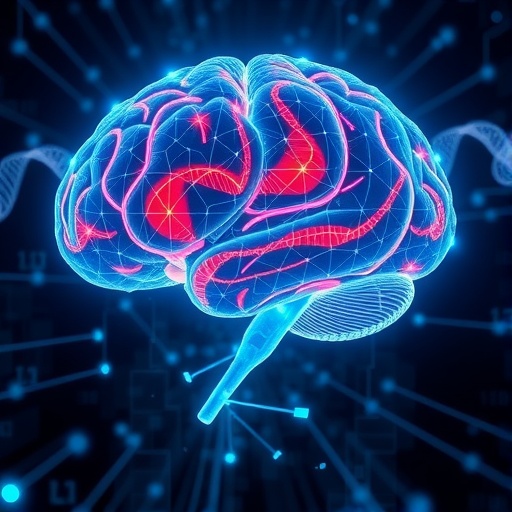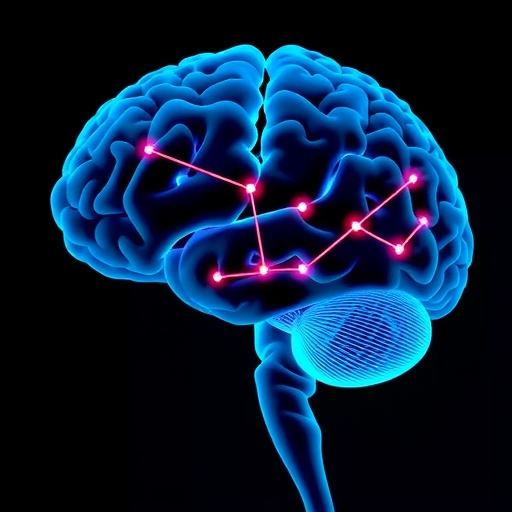For the first time, researchers from the Mark and Mary Stevens Neuroimaging and Informatics Institute (Stevens INI) at the Keck School of Medicine of USC have unlocked the complex genetic blueprint underlying the human corpus callosum, the brain’s largest communication superhighway. This dense band of nerve fibers crucially connects the left and right hemispheres of the brain, facilitating an array of cognitive and motor functions that underpin human experience. By revealing the specific genetic factors influencing the corpus callosum’s structure and subregions, this landmark study paves the way for transformative insights into the neural bases of mental illnesses and neurological disorders that have long evaded mechanistic understanding.
The corpus callosum plays an indispensable role in the integration of sensory inputs, coordination of bilateral motor control, and support of higher-order cognitive processes such as decision-making and language comprehension. Aberrant size and morphology of this structure have been implicated in a wide spectrum of conditions, ranging from attention deficit hyperactivity disorder (ADHD) and bipolar disorder to Parkinson’s disease. Despite the corpus callosum’s critical importance, the genetic architecture that governs its development and variability has remained elusive—until now.
Leveraging an unprecedented dataset composed of brain MRI scans and genomic data from over 50,000 individuals spanning childhood to advanced age, the research team harnessed artificial intelligence (AI) to systematically map the corpus callosum’s morphology. The novel AI-enabled tool, developed by the Stevens INI, autonomously detects the corpus callosum across diverse MRI modalities and precisely quantifies its dimensions. This capacity for automated, large-scale imaging analysis represents a quantum leap beyond laborious manual segmentation methods, accelerating the pace of discovery and enhancing reproducibility.
“Our AI tool identifies the corpus callosum in brain scans with remarkable accuracy and efficiency, enabling us to analyze subtle structural variations across thousands of individuals in a fraction of the time manual methods would require,” explains Shruti P. Gadewar, co-first author and research specialist at Stevens INI. By deploying this cutting-edge technology, the team pinpointed dozens of genetic loci exerting influence over both the overall size and the thickness of the corpus callosum, as well as its distinct subregions.
Intriguingly, the study delineated two genetically distinct sets of regulatory elements: one governing the corpus callosum’s surface area and the other controlling its thickness. These traits evolve dynamically through the lifespan and are hypothesized to differentially modulate brain connectivity and function. Several genes identified are known to be active during prenatal brain development, orchestrating processes such as neuronal proliferation, apoptosis, and axonal pathfinding across hemispheres. This genetic insight bridges critical molecular pathways with macroscopic brain architecture.
Ravi R. Bhatt, PhD, co-first author and postdoctoral scholar at the Imaging Genetics Center within Stevens INI, emphasizes the study’s broader significance: “By clarifying the genetic underpinnings of the corpus callosum’s structure, we gain unprecedented molecular-level understanding of how deviations in this essential communication pathway might contribute to susceptibility for various neuropsychiatric and neurodegenerative disorders.”
Further analysis revealed notable genetic overlap between loci influencing the corpus callosum and those associated with the cerebral cortex, the brain’s outermost layer implicated in memory, language, and attentional control. This shared genetic architecture underscores potential mechanistic links between variations in interhemispheric connectivity and cortical function, providing a genetically informed framework to understand complex brain disorders such as ADHD and bipolar disorder.
Neda Jahanshad, PhD, associate professor of neurology and senior author of the study, highlights the synergy between AI, neuroimaging, and genomics: “Our research exemplifies how integrating advanced computational tools with large-scale imaging and genetic datasets enables us to unravel the biological pathways shaping brain development and function. This integrative approach illuminates genetic vulnerabilities that may underlie psychiatric and neurological diseases.”
The implications of this work extend well beyond academic interest. Arthur W. Toga, PhD, director of Stevens INI, frames the findings as a pivotal step towards clinical translation: “Understanding the genetic architecture of the corpus callosum not only enriches fundamental neuroscience but also accelerates the quest for biomarkers and therapeutic targets that could transform diagnosis and treatment for millions affected by brain disorders worldwide.”
To enable and expedite future research in this domain, the team has made their AI-powered software tool publicly accessible. This platform democratizes the ability to automatically segment and measure the corpus callosum from MRI scans, empowering researchers globally to perform precise, high-throughput phenotyping of brain connectivity with unprecedented scale and fidelity.
The Stevens INI continues to lead innovation at the intersection of neuroscience and artificial intelligence, developing open-source computational technologies that revolutionize how brain health and disease are investigated. By harnessing extensive neuroimaging biobanks alongside genomic data, the institute is reshaping the landscape of brain research and accelerating discovery trajectories that could soon translate into clinical breakthroughs.
As AI-driven methodologies rapidly mature, studies like this showcase a compelling paradigm shift in neuroscience—from observational descriptions of brain structure to molecularly-informed, predictive models of brain function and pathology. The genetic blueprint decoded here represents a critical foundation upon which future exploration of brain connectivity and its disorders will be built, offering new hope for precision medicine in neurology and psychiatry.
Beyond advancing scientific frontiers, this study exemplifies how technological ingenuity combined with interdisciplinary collaboration can illuminate the intricate architecture of the human brain. The elucidation of the corpus callosum’s genetic determinants is a testament to how modern neuroinformatics and genetics are poised to unravel the profound mysteries of human cognition and disease.
This work was published in Nature Communications and is supported by grants from the National Institutes of Health, the National Science Foundation, the Adolescent Brain Cognitive Development Study, UK Biobank resources, and other prestigious foundations. The multidisciplinary team involved in this research comprises experts in neuroimaging, genetics, AI development, and clinical neuroscience—a collaboration that sets a new standard for integrative brain research.
The future of neuroscience lies at the nexus of high-dimensional data science and biological insight, and this study spearheads that trajectory by decoding how genetics sculpt the brain’s dominant conduit—the corpus callosum. As research builds on these findings, a more comprehensive understanding of brain connectivity in health and disease will unfold, ultimately informing interventions that enhance human wellbeing.
—
Subject of Research: People
Article Title: The Genetic Architecture of the Human Corpus Callosum and its Subregions
News Publication Date: 4-Nov-2025
Web References: https://www.nature.com/articles/s41467-025-64791-3
References: DOI: 10.1038/s41467-025-64791-3
Image Credits: Image/Stevens INI
Keywords: Brain, Corpus callosum, Brain structure, Magnetic resonance imaging, Neurological disorders, Psychiatric disorders, Attention deficit hyperactivity disorder, Bipolar disorder, Parkinson’s disease, Genetics
Tags: AI in neurosciencebrain MRI and genomic datacognitive function and brain structurecorpus callosum researchgenetic architecture of brain developmentgenetic blueprint of the brainhuman brain communication pathwaysmental illness genetic factorsneuroimaging and informaticsneurological disorder insightspsychosocial implications of brain researchUSC neuroimaging studies





